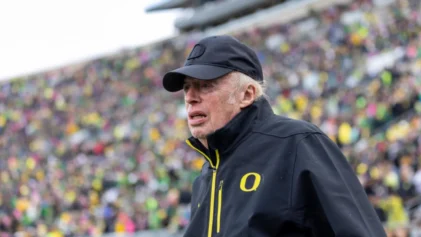Remember 1988? It was the year of the Hubble Space Telescope and the Tastybake oven. Hurricane Gilbert decimated Jamaica, the Stealth Bomber was unveiled as the new combative aviation standard and EPMD dropped Strictly Business.
In the entertainment world, a movie was released that was destined to become a cult classic for years to come. It depicted the purported exploits of an American martial artist, Frank Dux, who traveled to Asia to fight in an underground death match competition. Blood Sport debuted, launching the career of a then still-aspiring action star in Jean-Claude Van Damme and immediately eliciting the interest of an obtuse American public for an obscure sport called kickboxing.
Martial arts has long been a fascination of the U.S. public, with movies from Shaw Brother Films and stars like Bruce Lee, Jim Kelly, Chuck Norris, Jackie Chan, Jet Li and Donnie Yen. Comic book fans and video game heads joined the martial arts phenomenon with names/titles such as Power Fist, The Hands of Shang-Chi, Master of Kung Fu, Kung Fu Master and Mortal Combat. And of course, who can forget fan favorite Bolo Yeung aka Bolo (Enter The Dragon) and Chong Li (Blood Sport). Through these iconic names the discipline was literally catapulted into legendary status for being counter cultural and raw. Yet the idea of hybridization of multiple martial arts forms seems normal enough today due to the global prevalence and acceptance of mixed martial arts.
However, during the 70s and 80s, America developed a gradual obsession with all martial arts and some adherents, either out of boredom or sheer curiosity, began to combine the striking elements of a few to train for a new sport. Blood Sport highlighted the brilliance of the kickboxing movement and traditional martial artists Stateside wanted to capture the lethal beauty of the art in their studios.
The true genesis began decades earlier in the 50s in Japan then spilled over to Europe and the United States. The key elements of karate and muay thai were combined and began being broadcast competitively across Japan before entering a dark period in the 1980s.
It re-emerged once again in Japan during the early nineties with the formation of the famed K-1 promotion and the now historic Heavyweight tournaments that birthed champions such as Ernesto Hoost, Mark Hunt and Alistair Overeem.
While success was being witnessed overseas, back in the States the newly minted practitioners of kickboxing were attempting to organize but werent experiencing the same positive results. The initial competitive form of kickboxing in the U.S. had no real rules or weight classes and could hardly be distinguished from full contact karate. It was then that governing bodies like the World Kickboxing Association and the International Sport Kickboxing Association were founded and with them the true differentiation was established between the two art forms.
Promoters arose like Scott Coker, the current CEO of Bellator MMA and former owner of Strikeforce, which resulted in the creation of real American stars in the sport. Strikeforce, which started as a kickboxing organization before becoming an MMA threat to the UFC, established San Jose, California as a martial arts hotspot. Partnering with Silicon Valley Entertainment, the group that owns the San Jose Sharks hockey team, Strikeforce hosted its events in major arenas like the HP Pavilion and molded a regional fan base that attracted major television partners.
Stars like Frank Shamrock and Cung Le emerged and the commercial viability of the sport became more legitimate for corporate investment and distribution. Today European based organizations like GLORY hold 4 to 8 man tournaments and super fights, one-on-one dream match-ups, live on SPIKE TV, further stoking the interest of a now supercharged MMA audience, martial arts die-hards and casual observers alike.
Will kickboxing survive the MMA tsunami that has now engulfed the minds of the combat consuming masses?
We explore this question in Part 2 of our feature on the roots of culture of Kickboxing. Read it here.



